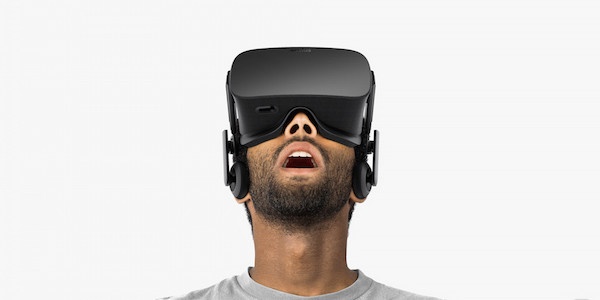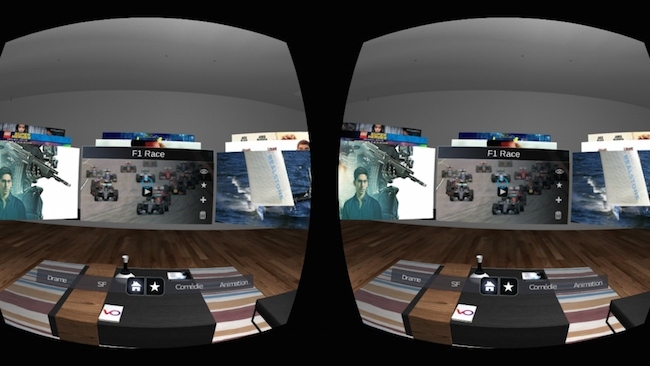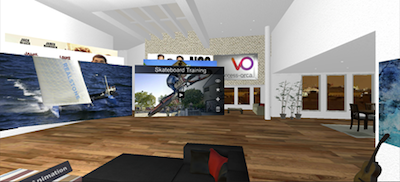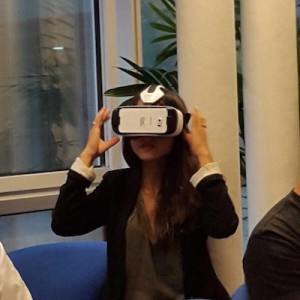
Great novelists often play the role of prophets, sometimes announcing with astonishing foresight key technological disruptions and the advent of radically new usages. Think of Jules Verne and his fiction novels From the Earth to the Moon and Twenty Thousand Leagues Under the Sea. Or, from a rather more dystopian viewpoint, George Orwell’s 1984.
The future will tell if Ernest Cline’s dystopian science fiction novel Ready Player One (2011), describing a society of recluses immersing themselves in a virtual world in the year 2045, contains such sparks of prophecy. For those who have experienced virtual reality via one of the head-mounted displays (HMD) such as Oculus Rift soon-to-reach the consumer market, it makes no doubt that we are witnessing the advent of a new era for personal digital entertainment. And if there is one aspect of the VR experience where it is hard to argue with Cline, it is for sure the centrality of “gaming”: the redefinition of immersive, real-time, multi-user interactions is consubstantial to the VR promise. To the extent that the descriptions of non-natively “gaming”-related VR use cases, are always intertwined, in Cline’s novel, with gaming references.
Take premium content for example. Often touted as the other 'killer app' for VR, the reference to 360 video viewing appears twice in Cline’s novel, always through the lens of “gaming” i.e. via the invention of some kind of “fully immersive karaoke game” dubbed “Flicksync” (quoting from the first occurrence in the book):
“It wasn’t my avatar’s face I saw there. It was Matthew Broderick’s face. […] Then I knew where I was. And who I was. I was David Lightman, Matthew Broderick’s character in the movie WarGames. And this was his first scene in the film. I was in the movie.
The company quickly […] began to buy up the rights to old movies and TV shows and convert them into immersive interactive games that they dubbed Flicksyncs. Flicksyncs became wildly popular, They turned out to be a huge market for games that allowed people to play a leading role in one of their favorite old movie or TV series.”
The very prospect of automatically converting regular 2D movies into VR-enabled “Flicksyncs” is sure already keeping a handful of entrepreneurs busy by the time I’m writing these lines. But beyond the futuristic use case imagined by E. Cline, I believe this tells us something more profound about premium content consumption in the era of virtual reality.
VR already has its killer app: gaming.

Virtual Cinema Home by Viaccess-Orca

Virtual Cinema Home by Viaccess-Orca

To take-off in a 360-degree, HMD-enabled environment, any premium content service offering will have to resonate with the specific requirements of this environment, and the following features will undoubtedly play a big role:
- Live streaming: imagine you (virtually) are in the stadium during the Superbowl, or in the changing room with the team players and the coach during the game break, literally feeling the tension in their eyes, reaching a level of immersion unheard of. There are a number of technical challenges to address in order to meet the requirements of “premium” live content distribution (incl. stitching, bandwidth, content protection etc.), but I believe a live experience potentially requires the same ingredients in terms of real-time, quality experience than immersive gaming
- Personalization: user’s engagement is and remains the currency in a world of immersion; backed by new insights into viewers’ usages and preferences (e.g. zone of focus, possibly gestures…), VR isn’t but the harbinger of the advent of truly personalized TV
- Interactivity: this is the kind of feature that really speaks to our “gamer’s instincts”, namely interactions around the content (e.g. get invited into your friends’ virtual home cinema to watch a movie together) or literally with the content (e.g. get immersed into a scene of the movie, a la Flicksync)
No doubt we are on to a long journey that, to some extent, will lead to the reinvention of the way people consume premium content. I trust that the announcement of our partnership with Harmonic and VideoStitch around 360-degree video at IBC could be an important milestone in this journey.
Don’t’ miss our demo of a 360-Degree Virtual Reality Solution! Come see us at stand 1A51.
Here's a recap of what people said about our VR demo at IBC:
Well done @ViaccessOrca. Amazing #VR demo with 360-degree personalised program guide #IBCShow #IBC2015 #wearabletech pic.twitter.com/SJZGxb4spT
— Paolo Pescatore (@paolopescatore) September 14, 2015
Most impressive demo so far at #ibcshow: ViaccessOrca VR content guide & 360 sports. VR 1 of top IBC themes though mass mkt still years away
— David Mercer (@DavidMercer_SA) September 12, 2015
Come see our fascinating #VirtualReality demo! Stand 1a51 #IBC2015 #IBCShow pic.twitter.com/FI5xCWvcqV
— Viaccess-Orca (@ViaccessOrca) September 14, 2015
Main pic: Oculus Rift
